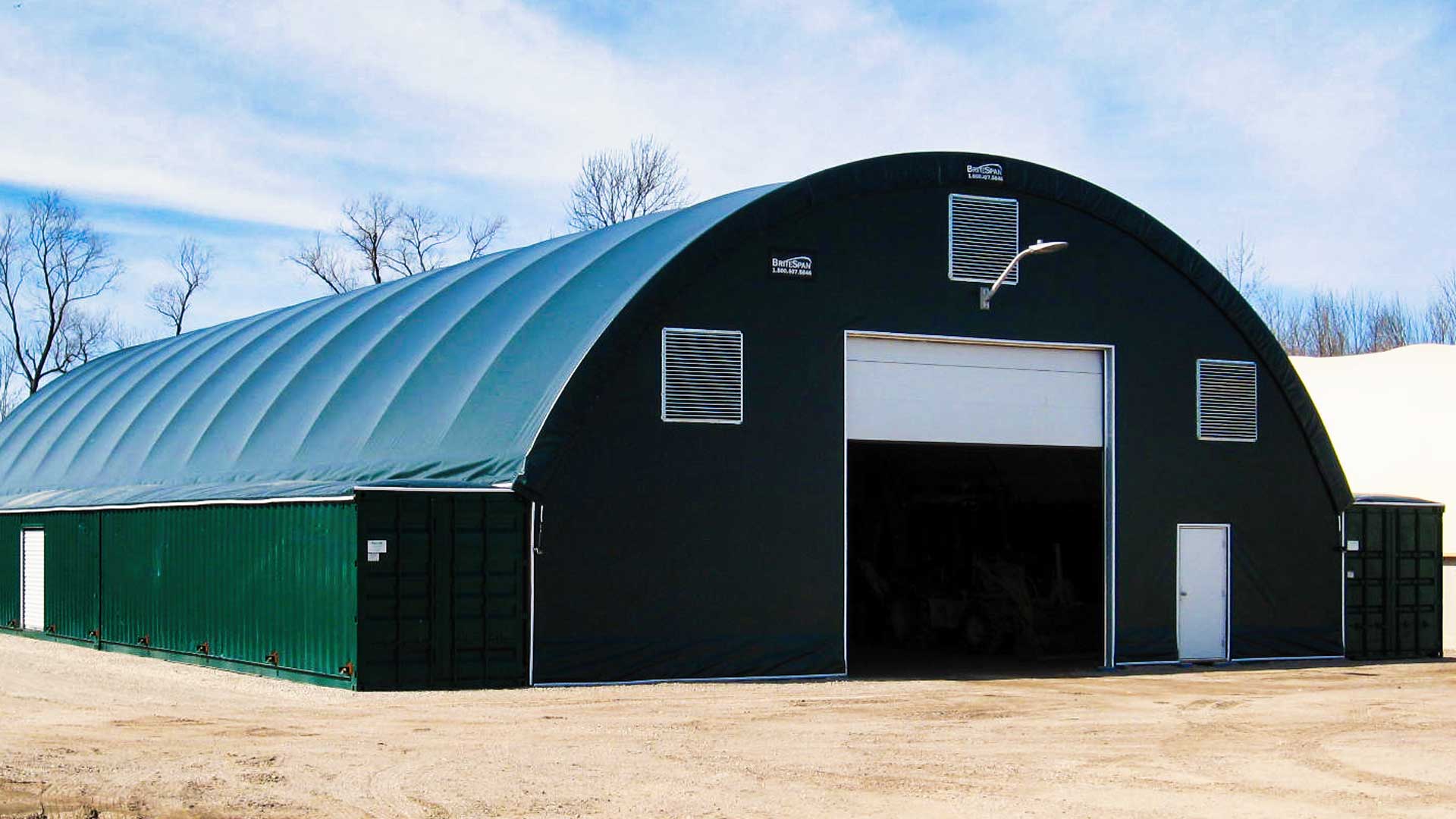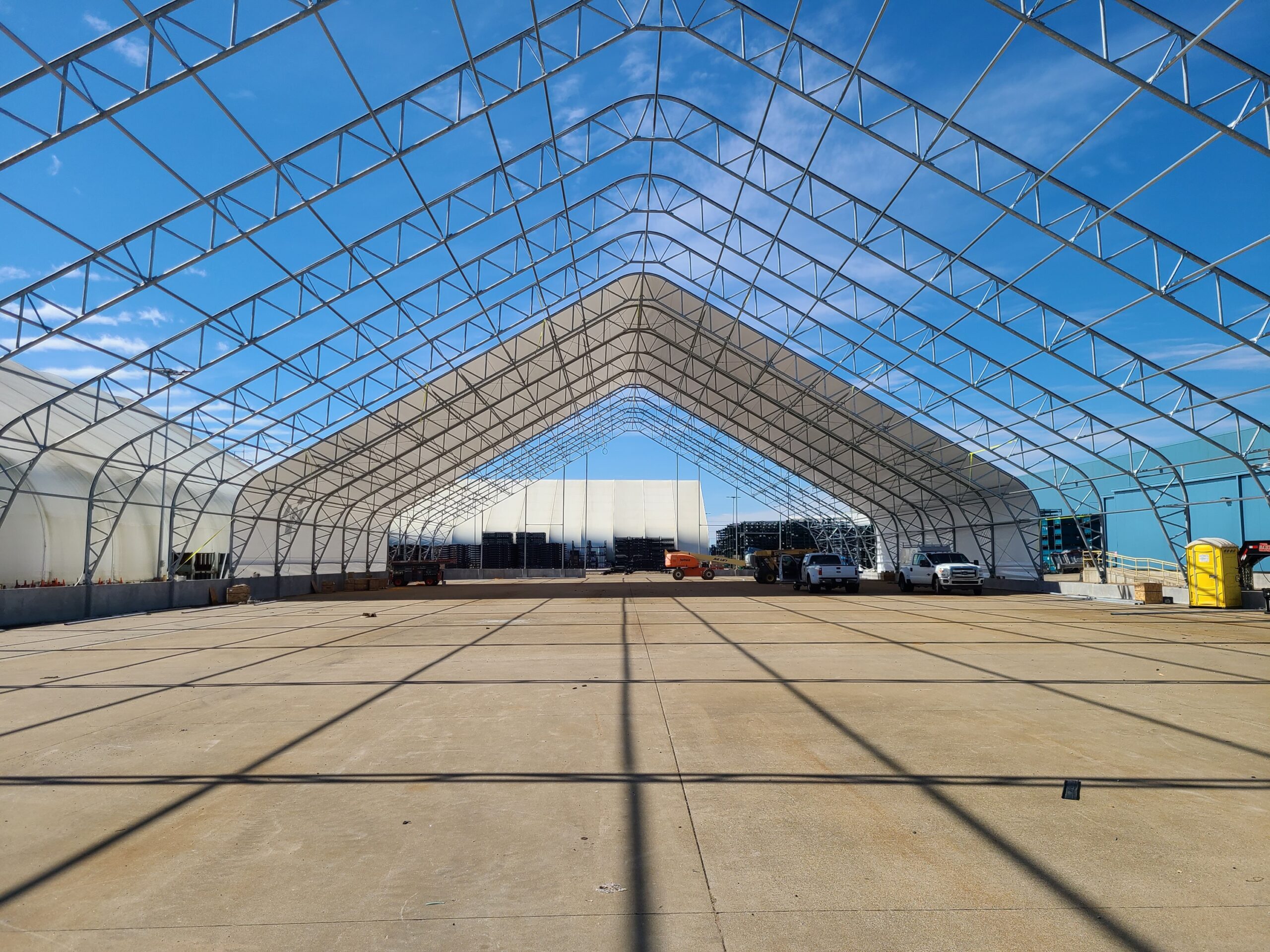How to Choose the Best Dairy Barn Installer for Modern, Column-Free Fabric Construction
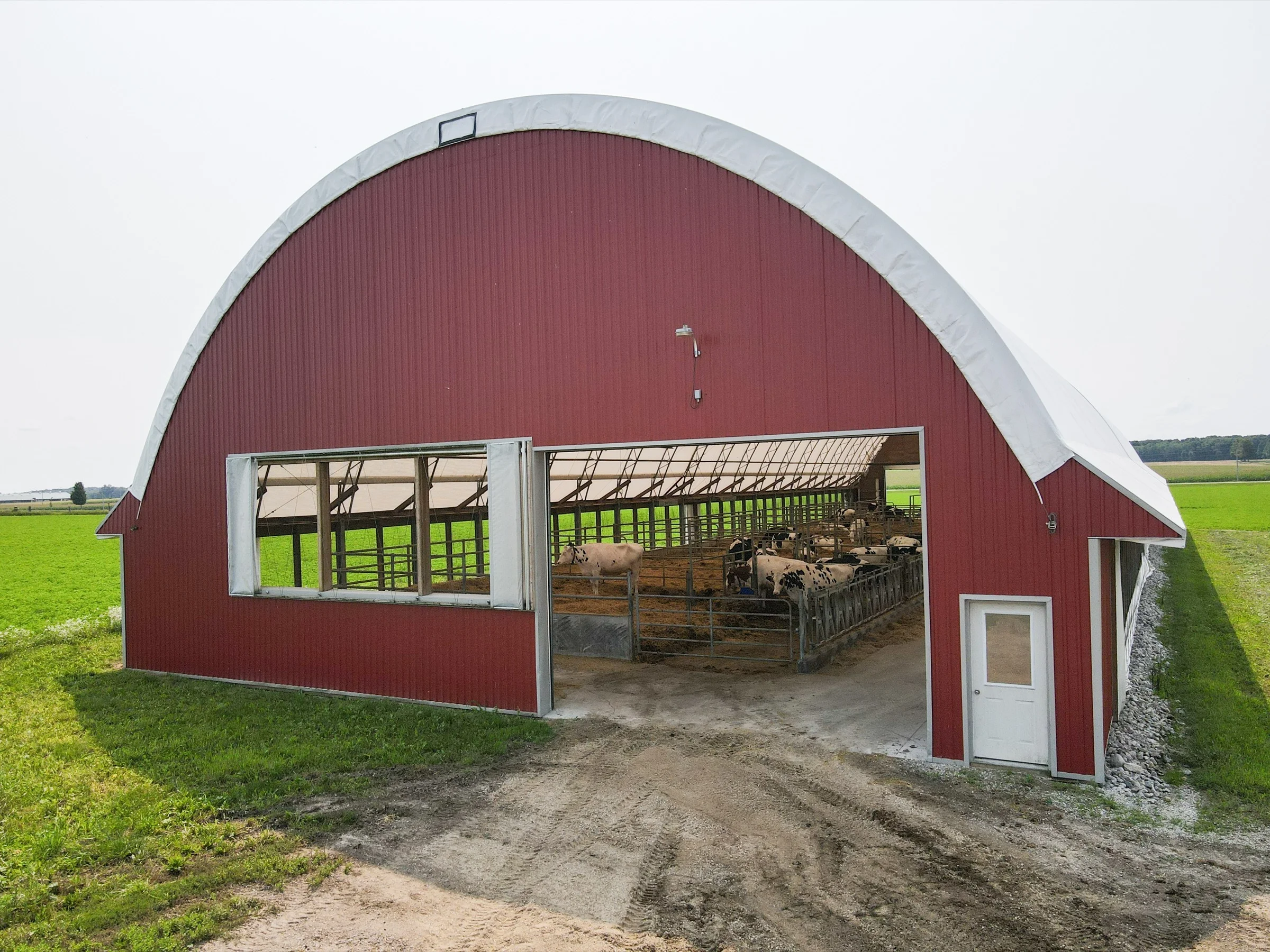
Finding the right dairy barn builder is one of the most important choices you will make for your herd and your team. Modern fabric-covered barns give you bright, calm spaces and wide, column-free spans that fit today’s equipment and tomorrow’s growth. The challenge is sorting qualified dairy barn contractors from generalists, then aligning the build with your management style and herd goals. This guide walks you through the criteria, the questions to ask, and the signals that show you are working with the right partner.
Start with Dairy Outcomes, Not Blueprints
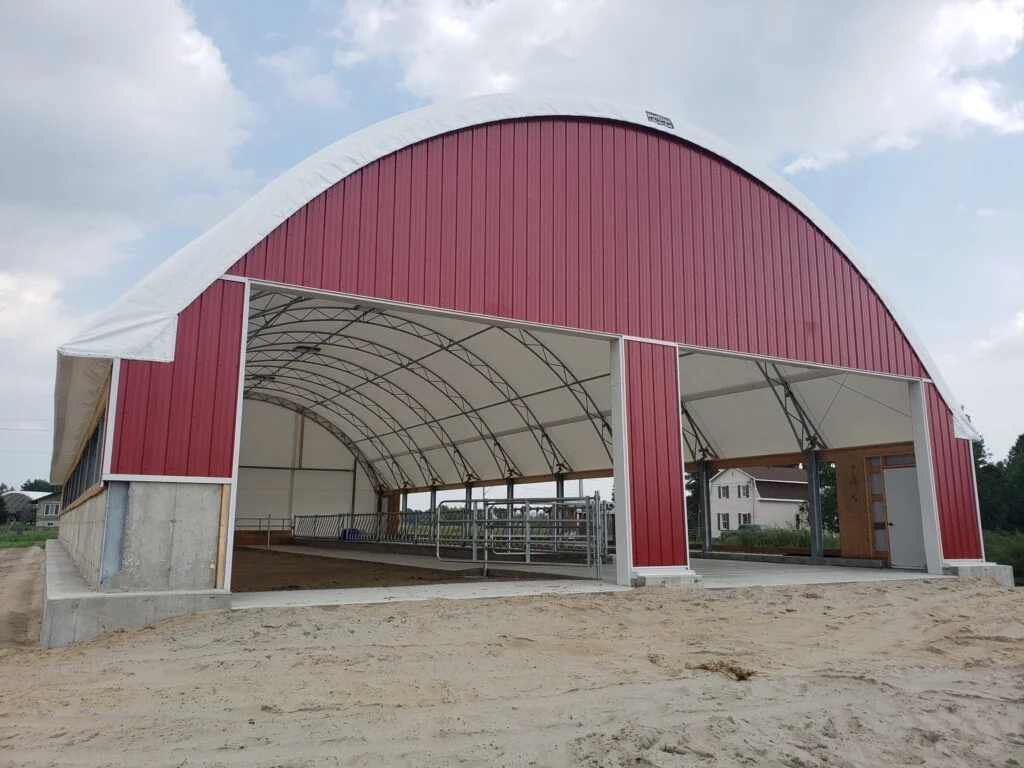
Every decision should point back to cow comfort, labor efficiency, and milk quality. A capable fabric dairy barn builder will start by asking about stocking density, feed lane traffic, bedding strategy, and how you like to move cows. They will discuss light levels, airflow, and manure handling before talking aesthetics. If a bidder jumps straight to square footage and price without digging into dairy barn design, keep looking.
For design background, see these resources:
- How Dairy Barn Design Impacts Cow Health & Milk Yields
- Optimizing Dairy Farm: The Fabric Barn’s Effect on Milk Production
Verify True Fabric Expertise
Not every contractor who sets posts and trusses understands tensioned membrane systems. Ask candidates to prove it with engineered systems experience. They should show projects designed for local wind and snow loads, provide sealed drawings, and share a track record of stamped approvals on dairy barn builds.
Look for column free layouts they have actually delivered. A qualified partner will present completed barns with wide clear spans and no interior posts, so large equipment can move freely and cow flow stays calm and efficient.
Confirm ventilation literacy. Ask for real examples that use ridge vents, overshot peaks, and sidewall curtains to maintain steady air exchange, and have them explain how those choices perform in your climate.
Finally, verify freestall know how. Request photos and plans from dairy free stall projects where stall layout, alley widths, and waterer placement match the bedding and scraping method you use.
Installation Quality is Everything
Even the best design can underperform if installation is sloppy. Ask how the team handles:
- Frame assembly and alignment: Tolerances, torque specs, and inspection checklists.
- Membrane tensioning: Stepwise methods, thermal allowances, and how they ensure consistent tension so fabric does not flap or pond water.
- Curtains and vents: Straight tracks, snug seals, and motor controls mounted where you can service them quickly.
- Pen hardware integration: Preplanned anchor points for headlocks, gates, and rub posts, with corrosion-resistant hardware in splash zones.
If your preferred Fabric dairy barn installer subcontracts crews, confirm who is actually on site, their training, and who holds warranty responsibility.
Design the Fabric Barn Around Your Workflow
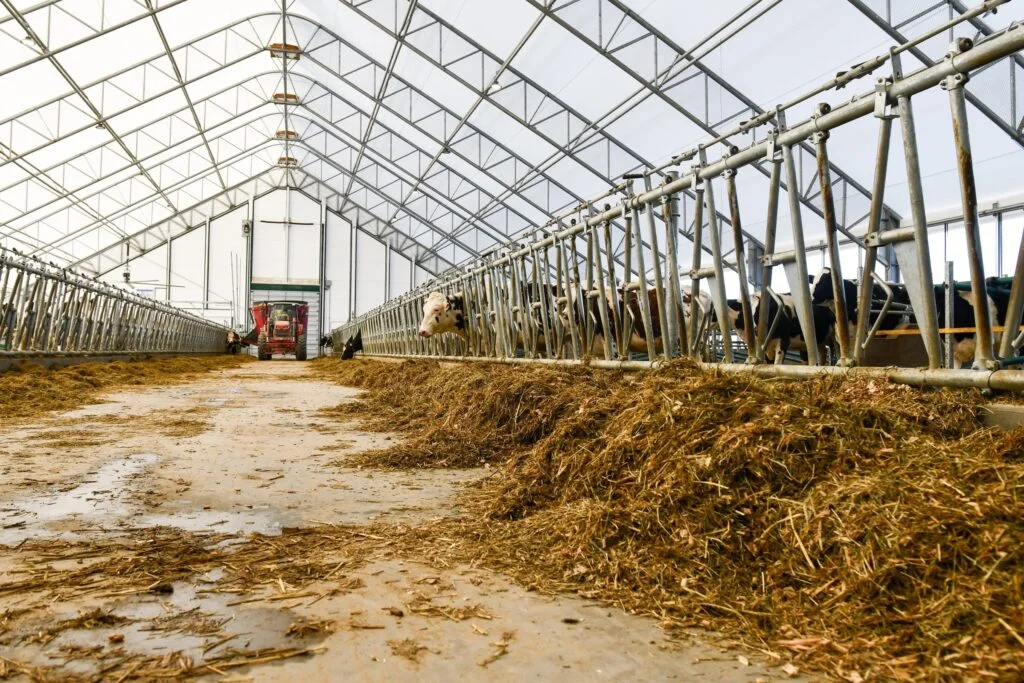
Great dairy freestall design starts at the feed lane. Plan one-way equipment movement with short, well-placed cross alleys so loaders and mixers do not backtrack or block cows. Smooth flow reduces congestion at the bunk and keeps cows eating instead of waiting.
Size stalls for your mature herd by breed and give cows the head space and lunge room they need to rise naturally. Correct neck rail and brisket placement, paired with clear forward lunge, lowers injury risk and helps control somatic cell challenges.
Place waterers along pen edges on high traction footing and keep them out of dead zones and social bottlenecks. Easy access to clean water supports intakes without disrupting traffic.
Choose a bedding strategy first, then engineer the details around it. Sand, compost, and mattress systems each change alley slopes, scraping frequency, curb geometry, and hardware. Your dairy barn builder should adapt dimensions and hardware to your bedding plan instead of forcing a standard template.
Because fabric structures deliver diffuse daylight and excellent clearance, a modern column free barn makes pen changes and equipment access faster and safer. The open interior keeps sightlines clean for calm handling and quick pregnancy checks or vet work inside the pen.
Ventilation in Fabric that Works All Year
A qualified fabric dairy barn builder will size and place inlets and outlets to deliver continuous, gentle air exchange:
- Ridge outlets: Continuous ridge openings or chimney vents to exhaust warm, moist air.
- Sidewall inlets: Roll-up curtains that you will actually use daily.
- Air distribution: Even movement at cow level, avoiding drafts on resting areas while keeping humidity and ammonia low.
Maintenance Mindset From Day One
Durable outcomes start with smart details. Ask your partner to build in wash-down and splash protection with elevated conduits, sealed boxes, and stainless or galvanized hardware in wet zones. Get a simple schedule for tension checks on the fabric, curtain tracks, and ridge components. Set a wear parts plan so you always have curtain straps, spare bearings, and other small items on hand.
Why Column-Free Fabric Works for Dairy
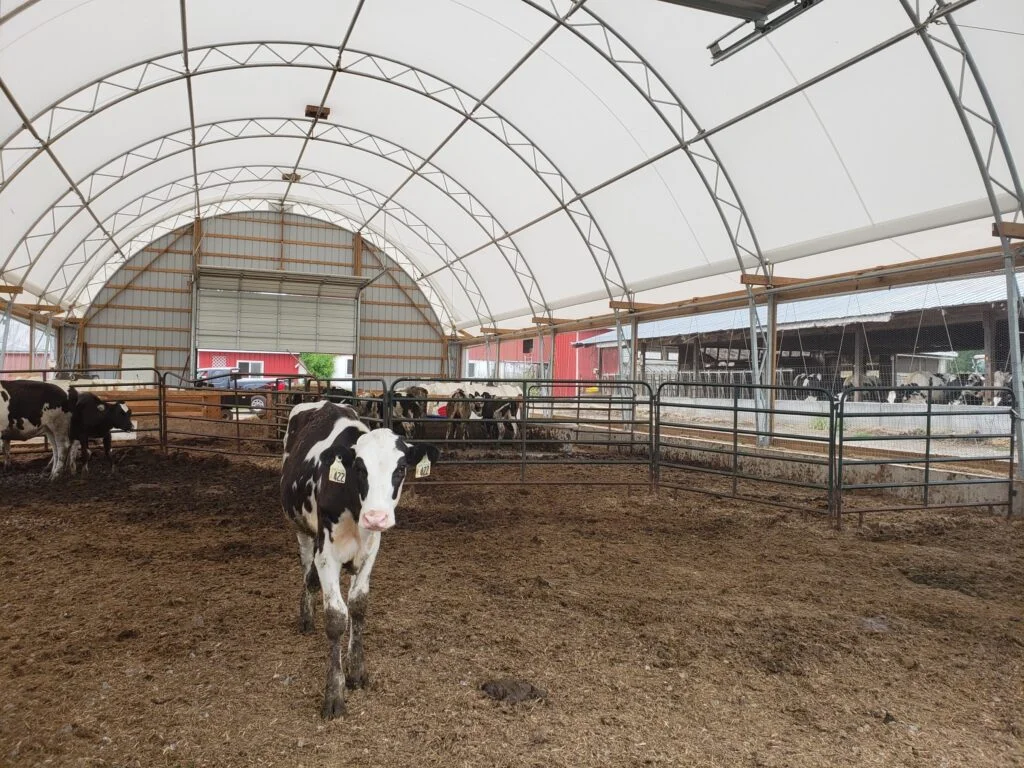
Column-free interiors transform daily work. Cows move in straighter lines to feed and stalls, mixers and loaders navigate without tight turns, and you can retrofit tech like robots or sort gates without running into structural posts. The translucent membrane brightens the entire footprint, which calms cows and reduces reliance on daytime lighting. The Atlas Series is a strong example of a column-free profile used in modern dairy barn projects that value airflow and natural light alongside clearance for tall equipment.
For a balanced view on long-term performance, read:
- Fabric vs. Metal/Wood Dairy Barns – ROI and Savings Compared
- Professional Installation: Building Your Fabric Dairy Barn
Red Flags that Signal the Wrong Fit
- Vague answers on ventilation math or load paths.
- No photo evidence of column free dairy barn projects at your target width.
- Generic quotes that ignore stall type, bedding, or manure handling.
- Limited service plan and no tensioning schedule after handoff.
Pulling it Together
Choosing the right dairy barn builder is about more than a building shell. It is a partner who understands cow comfort, labor flow, and the realities of 365-day dairy work. Prioritize proven experience with fabric structures, mastery of dairy barn design, and clean, repeatable installation practices. Confirm that your fabric dairy barn installer can deliver a true column-free span, dial in ventilation, and support your maintenance plan after the ribbon is cut. Explore the Atlas Series and fabric barn styles to compare profiles, and use the resources above to align your design with herd health and high-performing milk routines.
